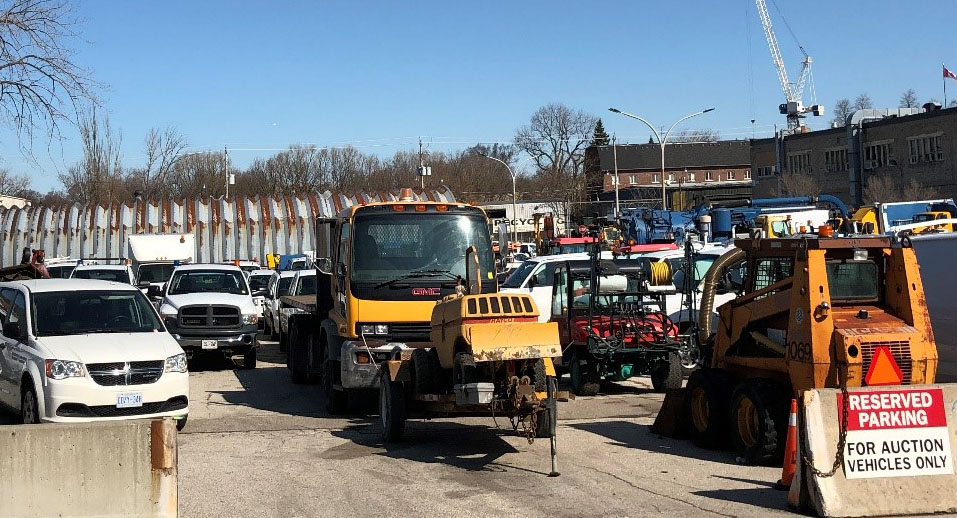City of Toronto staff rely on their fleet to deliver many services to the public, such as picking up waste, repairing roads, and maintaining our parks and communities. The Fleet Services Division is tasked with keeping this diverse array of vehicles and equipment up and running.
This video summarizes the audit report.
By The Numbers
- 1 in 7 vehicles or equipment ($68 million in assets) out of service daily
- 80/20 preventive maintenance to repair ratio compared to targeted 60/40
- 24% repeat repair rate within 60 days for Class 8 heavy duty vehicles
- $6 million parts purchased annually
- 21%* actual parts supply rate at point of purchase (within 1 hour) vs. 85% in contract
- 10% – current parts warranty claim rate
- $400,000 – potential annual savings from claiming warranties for 80% of parts and a portion of labour costs
*Based on M5 system data during the first 5 months of a new parts request module rollout.
Background
The City’s Fleet Services maintains a fleet of just under 5,000 vehicles and equipment with a value of about $330 million.
In October 2017, Fleet Services completed the initial implementation of its Alternate Service Delivery Model, resulting in the contracting out of light duty vehicle services. This was meant to allow Fleet Services staff to specialize in medium and heavy duty vehicles. Fleet Services’ goal was to improve service delivery and reduce overall vehicle downtime.
Our audit assessed the effectiveness of maintenance performed by City garages as well as external vendors, a year and a half into the implementation of this new service delivery model.
What We Found
Lengthy Vehicle Downtime
Downtime is the amount of time a vehicle is out of service due to maintenance or repair. From 2015 to 2018, the City fleet’s downtime remained lengthy and far from Fleet Services’ own targets:
| Light | Medium | Heavy | |
| Target | 6 – 8 days | 14 – 23 days | 31 – 48 days |
| Actual | 22 days | 38 days | 51 days |
In particular, one-fifth of the medium and one-third of the heavy duty vehicles were out of service daily in January and February 2019.
Frequent Parts Delays
Delays in receiving parts is a major reason causing prolonged downtime. Fleet Services buys approximately $6 million per year in parts from its parts supplier. Only 21 per cent* of parts requested were supplied at the point of purchase — significantly lower than the 85 per cent stipulated in the contract. Fleet staff sometimes needed to wait for more than a week to receive parts.
Cumbersome External Service Logistics
The process to acquire maintenance services from external vendors is cumbersome due to delays in scheduling service, approving estimates by Fleet staff, vehicle pickup and drop-off, and invoice payment. These delays and inefficiencies add to vehicle downtime.
Ineffective Warranty Management
Of the $680,000 worth of parts that failed within their warranty terms, only 10 per cent were claimed for warranty by Fleet Services. If it had successfully claimed warranties for 80 per cent of the parts and a portion of its labour costs, it could have potentially saved $400,000 per year.
*Based on M5 system data during the first 5 months of a new parts request module rollout.
How the Recommendations Will Benefit The City
This report provides 14 recommendations to help reduce vehicle downtime, strengthen warranty administration, and improve the efficiency and effectiveness of the City’s overall fleet maintenance operations.
